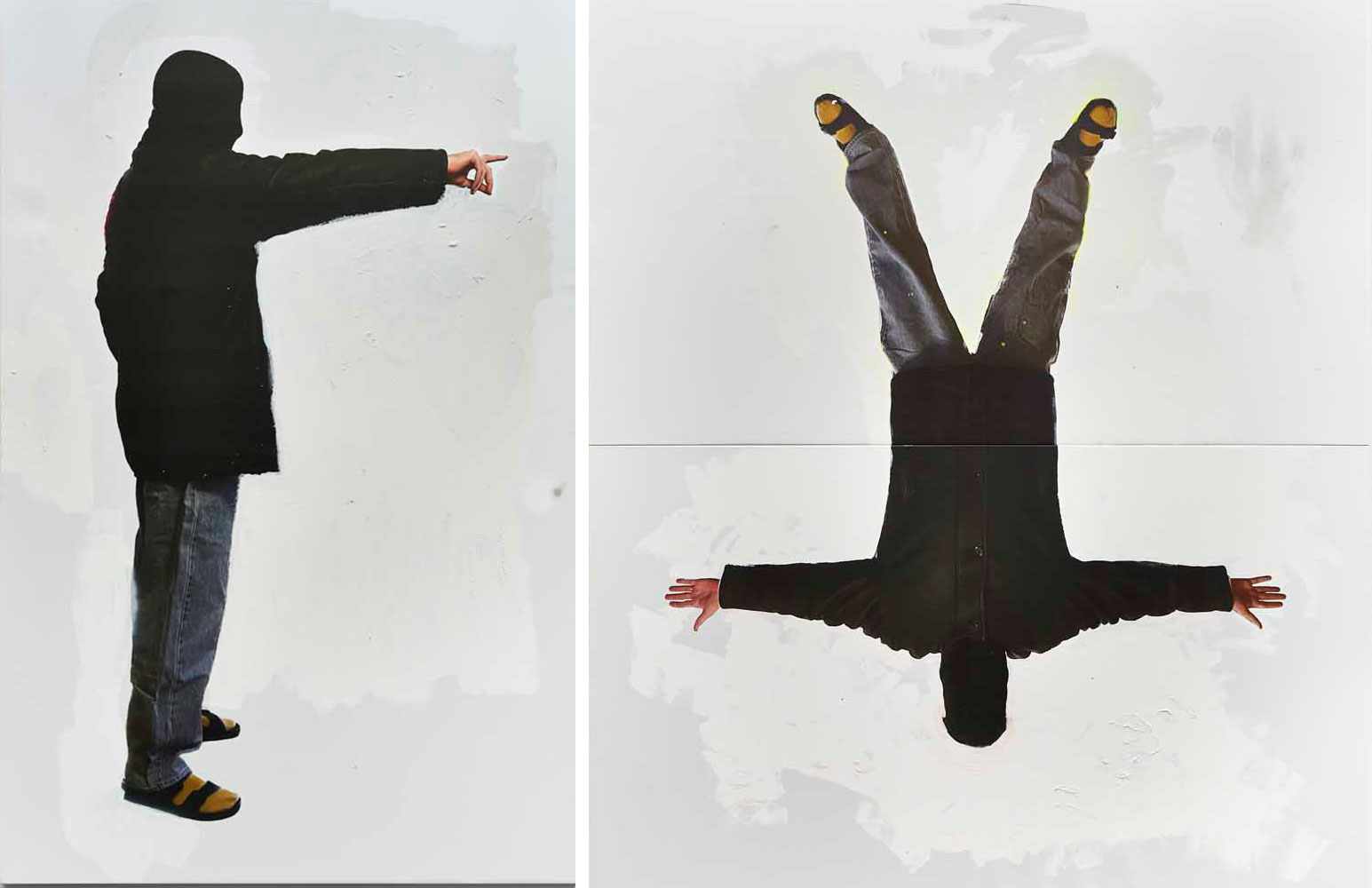PRESENTATION: Kaspar Müller & Juan Antonio Olivares-The Panther
 Carla Fernández presents “The Panther,” the first exhibition featuring a dialogue of new and recent works by Kaspar Müller and Juan Antonio Olivares. The exhibition, which marks an inaugural space in New York, takes as its departure the context of the US commodity regime, exposing its principles and systemic crevasses.
Carla Fernández presents “The Panther,” the first exhibition featuring a dialogue of new and recent works by Kaspar Müller and Juan Antonio Olivares. The exhibition, which marks an inaugural space in New York, takes as its departure the context of the US commodity regime, exposing its principles and systemic crevasses.
By Efi Michalarou
Photo: Aguirre Gallery Archive

Kaspar Müller’s practice makes seemingly familiar objects somehow appear as hieroglyphs. A cast of everyday, yet nonetheless strangely hermetic motifs reappear throughout his oeuvre like vanished memories. Recoded, recalcitrant, and on first glance sometimes stubbornly mute, past works have ranged from physically tangible sculpture to shadowy reproductions of images. Often working in recursive loops, Müller creates elusive installations that stage the fluctuations and transformation of the creative process between the space of the studio and the gallery. For Müller, this process is akin to archeology, yet the things he addresses aren’t hidden; we simply don’t pay attention to them. The moment that their latent qualities suddenly emerge and seem connected and appealing is an exciting moment, which, as Müller notes, is “prone to mystification.” Müller’s works examine the residues of different systems of production and value, honing in on the formal and associative qualities of everyday objects and goods. With his lamp sculptures, Müller engages with how industrial lighting, from its inception to the current day, functions as a means to create a mood or atmosphere through the expression of one’s aesthetic affinities. Müller’s interest in notions of craft and reproduction, and vintage and “fake vintage,” led him to bring together an exuberant yet discordant constellation of bulbs as a kind of mirror of the range of industrial production and contemporary taste. Müller’s new works began as ordinary family snapshots, which he anonymized by cropping himself into emoticon-like figures, surrendering control to the technology. The lacquered surface of the resulting images, evidence of the artist’s hand, creates a camouflage for digital exploitation. Figures point, beg, kneel, and judge. One figure of a man is blocked, his back turned, another appears to be looking for something on the floor? The vectors that inform the continuity of these abstracted figures tackle the conditions of possibility, learning and unlearning, fleeting sentiments of the domestic space as well as the working place, self-indulgence and self-humiliation. The figures lack faces or certainty. Social codes are not personalized, we long for identification, yet is freedom behind anonymity possible? The artist’s digitally cropped figure and blank canvas grew intrigue for the deleted domestic space surrounding him: “What is left out also forms our identity”. Müller’s “Bottle Catapult” is loaded in a waiting position, an algorithm is programmed to have the capacity and power to decide when and where to trigger. The moment it’s triggered, a bottle of red wine is destroyed, showcasing its imminent capacity to damage anything it touches. The catapult serves as a metaphor for real subsumption, possessing more power to take life than life itself. Like capitalism the forms in the exhibition are grotesque, eerie, uncanny.

Juan Antonio Olivares works in digital animation, video installation, sound, sculpture, drawing and painting to create psychologically charged environments that merge nature and technology. Mining the subconscious impulses that reflect our deeply embedded fears and desires, Olivares abstracts them through digital interfaces. His work explores humanity through constantly evolving forms of imagemaking. Olivares’ AI-generated panels were created through text-based prompts, which became titles for their corresponding works: ‘modern domestic torture chamber and corporate office fantasy. Image generation provided a method of achieving what is closest to a conceptual image from a text-based approach; the distillation of an idea materialized through data. Despite the artist’s tweaks and directions, the software ultimately did what it wanted to do, eliminating authorial intention. Olivares then renders these digitally formed images into reality with acrylic and graphite powder on aluminum panels. AI, still in its primitive era, evokes a paradox of power and captivity. It paces behind our screens, imitating us, feeding from our conscience to create its own, and possibly aims to exist after us. There is an irony is that the perceived heaviness, fastness, precariousness, the fear of implosion, of our reality is merely determined by physics, weight, and lightness. Olivares’, “Surrender” a glass sculpture hand blown inside a chain link ring hangs by this same constrictive force vertically from the floor. In a matter of cosmic scale, forces and relationships described by subatomic physics are ultimately the only determination for our survival. The constraints of political economy can and get in the way of aesthetics: only when we are in safety do we enjoy the sublime spectacle of danger. Beauty, still ineffective, presupposes liberation from needs, since we actually live and are conditioned by a capitalist mode of production.
Photo: Kaspar Müller, Templates for Strawmen 2, 2024, 51 x 87 x 1” (130 x 220 x 3 cm), UV Inkjet, Metallic coated canvas, Oil, Acrylic, Lacquer. Courtesy the artist, Aguirre
Info: Aguirre Gallery, 49 Walker St, New York, USA, Duration: 3/5-8/6/2024, Days & Hours: Tue-Fri 11:00-18:00, Sat 12:00-18:00, https://aguirree.com/

Right: Juan Antonio Olivares, Surrender, 2024, 14 x 16 x 81” (35.6 x 41 x 206cm) Stainless steel and glass. Courtesy the artist, Aguirre

Right: Kaspar Müller, Templates for Strawmen 1, 2024, 102 x 87 x 1” (260 x 221 x 3 cm) Diptych, UV Inkjet, Metallic coated canvas, Oil, Acrylic, Lacquer. Courtesy the artist, Aguirre





